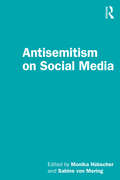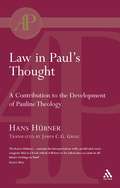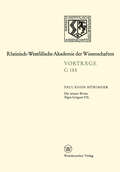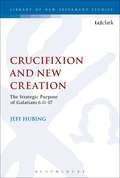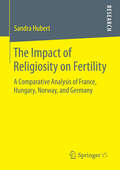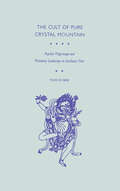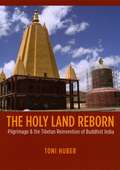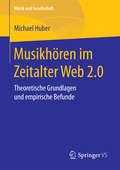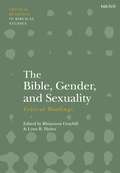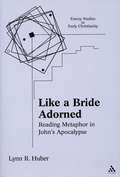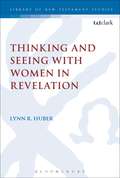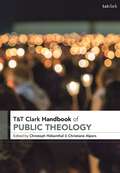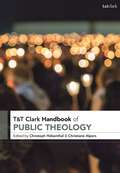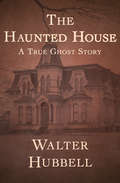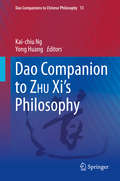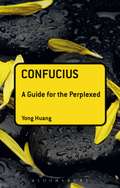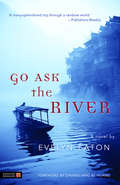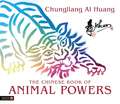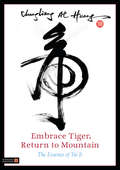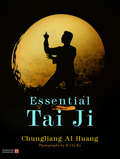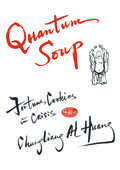- Table View
- List View
Antisemitism on Social Media
by Monika Hübscher Sabine Von MeringAntisemitism on Social Media is a book for all who want to understand this phenomenon. Researchers interested in the matter will find innovative methodologies (CrowdTangle or Voyant Tools mixed with discourse analysis) and new concepts (tertiary antisemitism, antisemitic escalation) that should become standard in research on antisemitism on social media. It is also an invitation to students and up-and-coming and established scholars to study this phenomenon further. This interdisciplinary volume addresses how social media with its technology and business model has revolutionized the dissemination of antisemitism and how this impacts not only victims of antisemitic hate speech but also society at large. The book gives insight into case studies on different platforms such as Twitter, Facebook, TikTok, YouTube, and Telegram. It also demonstrates how social media is weaponized through the dissemination of antisemitic content by political actors from the right, the left, and the extreme fringe, and critically assesses existing counter-strategies. People working for social media companies, policy makers, practitioners, and journalists will benefit from the questions raised, the findings, and the recommendations. Educators who teach courses on antisemitism, hate speech, extremism, conspiracies, and Holocaust denial but also those who teach future leaders in computer technology will find this volume an important resource.
Law in Paul's Thought (Academic Paperback Ser.)
by Hans HübnerUntil now Paul's theology has been treated in exegetical literature almost exclusively as a systematic ntil now Paul's theology has been treated in exegetical literature almost exclusively as a systematic whole. Here, by contrast, the attempt is made to show how Paul's theology can be adequately understood only when it is seen in relation to its development. There is a decisive process of theological development between Galatians and Romans which in turn must be related to Paul's biography.Law in Paul's Thought examines the relation between Paul's teaching in Galatians and Romans, arguing that there is a major shift in emphasis between the two. An intriguing and concisely argued monograph, it points to a striking discord within Paul's view of the Law and asks whether these differences should not be explained in terms of development in Paul's theology. Hübner skillfully traces the arguments and interconnections between arguments in the different passages, illuminating Paul's theology from law.
Die letzten Worte Papst Gregors VII: 164. Sitzung am 20. Januar 1971 in Düsseldorf (Rheinisch-Westfälische Akademie der Wissenschaften)
by Paul Egon HübingerCrucifixion and New Creation: The Strategic Purpose of Galatians 6.11-17 (The Library of New Testament Studies #508)
by Jeff HubingThis book provides an interpretation of Galatians 6:11-17 which yields significant insights about Paul's perception of the crisis in Galatia, and the solution he presents to his readers in light of it. In the first section of the book, the epistolary form and function of Galatians 6:11-17 are analysed. Revealed as a body-closing, it works to sharpen and complete Paul's message by spelling out his motivation for writing and establishing the basis for further communication with his readers. The theme of persecution in the letter is then seen rendered both explicitly and implicitly through the examination of pertinent passages. These indicate that all parties involved share some connection to persecution. Finally, an exegetical analysis of Galatians 6:11-17 reveals Paul's claim that the agitators' primary motive is to avoid persecution 'because of the cross of Christ.' He contrasts them with himself by 'boasting' in that same cross. The net effect is that Paul draws on both the redemptive moment of Jesus' death, and the ongoing cross-shaped life he lives, to validate his apostleship.
The Impact of Religiosity on Fertility: A Comparative Analysis of France, Hungary, Norway, and Germany
by Sandra HubertThe work investigates the impact of religiosity of women and men on their completed fertility in an international comparison considering a long time period. Sandra Hubert aims at uncovering all mechanisms through which religiosity and religious institutions can affect fertility. Hence, both the micro- and the macro-level of each country are explicitly integrated, and theoretically as well as empirically dealt with. The selection of differing countries rests upon the expectation that religiosity influences fertility decisions independently of the institutional context, social norms, state church-relations, and the national degree of religious vitality. These factors are intensively compared with each other at the country level. At the micro-level the impact of religiosity on fertility is tested by means of regressions and based on the Generations and Gender Survey. Results depend on gender, country, the diverse religious affiliations, and more.
The Cult Of Pure Crystal Mountain: Popular Pilgrimage And Visionary Landscape In Southeast Tibet
by Toni HuberThe Tibetan district of Tsari with its sacred snow-covered peak of Pure Crystal Mountain has long been a place of symbolic and ritual significance for Tibetan peoples. In this book, Toni Huber provides the first thorough study of a major Tibetan Buddhist pilgrimage center and cult mountain, and explores the esoteric and popular traditions of ritual there. The main focus is on the period of the 1940s and '50s, just prior to the 1959 Lhasa uprising and subsequent Tibetan diaspora into South Asia. Huber's work thus documents Tibetan life patterns and cultural traditions which have largely disappeared with the advent of Chinese colonial modernity in Tibet. In addition to the work's documentary content, Huber offers discussion and analysis of the construction and meaning of Tibetan cultural categories of space, place, and person, and the practice of ritual and organization of traditional society in relation to them.
The Cult of Pure Crystal Mountain: Popular Pilgrimage and Visionary Landscape in Southeast Tibet
by Toni HuberThe Tibetan district of Tsari with its sacred snow-covered peak of Pure Crystal Mountain has long been a place of symbolic and ritual significance for Tibetan peoples. In this book, Toni Huber provides the first thorough study of a major Tibetan Buddhist pilgrimage center and cult mountain, and explores the esoteric and popular traditions of ritual there. The main focus is on the period of the 1940s and '50s, just prior to the 1959 Lhasa uprising and subsequent Tibetan diaspora into South Asia. Huber's work thus documents Tibetan life patterns and cultural traditions which have largely disappeared with the advent of Chinese colonial modernity in Tibet. In addition to the work's documentary content, Huber offers discussion and analysis of the construction and meaning of Tibetan cultural categories of space, place, and person, and the practice of ritual and organization of traditional society in relation to them.
The Holy Land Reborn: Pilgrimage and the Tibetan Reinvention of Buddhist India (Buddhism and Modernity)
by Toni HuberThe Dalai Lama has said that Tibetans consider themselves “the child of Indian civilization” and that India is the “holy land” from whose sources the Tibetans have built their own civilization. What explains this powerful allegiance to India? In The Holy Land Reborn¸ Toni Huber investigates how Tibetans have maintained a ritual relationship to India, particularly by way of pilgrimage, and what it means for them to consider India as their holy land. Focusing on the Tibetan creation and recreation of India as a destination, a landscape, and a kind of other, in both real and idealized terms, Huber explores how Tibetans have used the idea of India as a religious territory and a sacred geography in the development of their own religion and society. In a timely closing chapter, Huber also takes up the meaning of India for the Tibetans who live in exile in their Buddhist holy land. A major contribution to the study of Buddhism, The Holy Land Reborn describes changes in Tibetan constructs of India over the centuries, ultimately challenging largely static views of the sacred geography of Buddhism in India.
The Holy Land Reborn: Pilgrimage and the Tibetan Reinvention of Buddhist India (Buddhism and Modernity)
by Toni HuberThe Dalai Lama has said that Tibetans consider themselves “the child of Indian civilization” and that India is the “holy land” from whose sources the Tibetans have built their own civilization. What explains this powerful allegiance to India? In The Holy Land Reborn¸ Toni Huber investigates how Tibetans have maintained a ritual relationship to India, particularly by way of pilgrimage, and what it means for them to consider India as their holy land. Focusing on the Tibetan creation and recreation of India as a destination, a landscape, and a kind of other, in both real and idealized terms, Huber explores how Tibetans have used the idea of India as a religious territory and a sacred geography in the development of their own religion and society. In a timely closing chapter, Huber also takes up the meaning of India for the Tibetans who live in exile in their Buddhist holy land. A major contribution to the study of Buddhism, The Holy Land Reborn describes changes in Tibetan constructs of India over the centuries, ultimately challenging largely static views of the sacred geography of Buddhism in India.
Musikhören im Zeitalter Web 2.0: Theoretische Grundlagen und empirische Befunde (Musik und Gesellschaft)
by Michael HuberIn Anschluss an aktuelle Erkenntnisse soziologischer und sozialpsychologischer Musikrezeptionsforschung erläutert der Band, welche gesellschaftlichen Funktionen das Musikhören heute erfüllt und welche Rolle hier die neuen Rahmenbedingungen im Web 2.0 spielen. Auf Basis repräsentativer empirischer Erhebungen werden musikalische Einstellungen und Verhaltensweisen illustriert sowie klar abgrenzbare Musikhörtypen charakterisiert, die in je besonderer Weise mit den aktuellen Möglichkeiten und Herausforderungen der digitalen Mediamorphose umgehen. Besondere Berücksichtigung findet dabei die Frage nach der Bedeutung primärer Sozialisation als Gegengewicht zur musikalischen Selbstsozialisation im Internet. Vor allem Alter, Schulbildung und Wohnortsgröße der Menschen zeigen sich als entscheidende Einflussgrößen der individuellen musikalischen Praxis in Österreich.
The Bible, Gender, and Sexuality: Critical Readings (T&T Clark Critical Readings in Biblical Studies)
by Lynn R. Huber Rhiannon GraybillThis volume collects the most important and cutting-edge readings related to gender, sex, sexuality and the Bible. Engaging the Hebrew Bible, New Testament, and surrounding texts and worlds, Rhiannon Graybill and Lynn Huber have amassed a selection of essays that reflects a wide-range of perspectives and approaches towards gender and sexuality. Presented in three distinct parts, this collection begins with an examination of gender/s in and around biblical contexts, before moving to discussing sex and sexualities, and finally critiques of gender and sexuality. Each section features key readings both from the history of scholarship and more contemporary, cutting-edge studies; and each are introduced by Graybill and Huber in order to situate the readings in their broader scholarly contexts. Culminating with an annotated list of further readings to point researchers towards further engagements with these key themes, the collection provide vital understanding to a crucial topic both in biblical studies and in current debates about religion.
Like a Bride Adorned: Reading Metaphor in John's Apocalypse (Emory Studies in Early Christianity)
by Lynn R. HuberThe phrase "like a bride adorned" is one of the ways Revelation describes the new Jerusalem which descends from heaven. This phrase can also be read as describing one of the ways interpreters historically have understood the relationship between Revelation and its metaphorical language. In contrast to views that suggest Revelation's metaphorical language is simple adornment, Huber argues that Revelation's persuasive power resides within the text's metaphorical nature and she articulates a method for exploring how Revelation employs metaphor to shape an audience's thought. In order to gain a sense of how metaphorical language works in Revelation's highly metaphorical text,"Like a Bride Adorned:" Reading Metaphor in John's Apocalypse engages one set of conceptual metaphors in relation to Revelation's literary and social-historical milieu. Specifically, Huber explores the conceptual metaphors undergirding Revelation's nuptial or bridal imagery. Positioned at the culmination of the text's, nuptial imagery serves as one the text's final and arguably one of its most important characterizations of the Christian community.Examining the function of Revelation's nuptial imagery involves investigating how the text redeploys conventional metaphorical constructions used in the writings of the Hebrew prophets and how its imagery engages Greco-Roman depictions of women, weddings, and brides. Discourse about marriage and family was such an important part of Revelation's historical context, especially as it was shaped by the Roman Empire, that any discussion of the text's nuptial imagery must examine how it reflects and responds to this discourse. By addressing these questions, we see that Revelation's nuptial imagery serves to further the text's goal of shaping Christian identity in opposition to the social demands of the Roman Empire. Moreover, exploration of the conceptual metaphors undergirding Revelation's "bride adorned" reveals how John seeks to shape Christian identity as a transitional identity. Through metaphor, Revelation encourages its audience to envision the Christian community as a bride who constructs "her" own identity as she transitions into a new role in relation to God and the Lamb. Through the process of exploring Revelation's nuptial imagery with insights gained from conceptual metaphor theory, we uncover the ways that John employs metaphorical language to persuade his audience's thought about themselves and about others. Consequently, this work contributes both to our understanding of the text's nuptial imagery and to our knowledge of how Revelation employs metaphor as tool for persuasion.
Thinking and Seeing with Women in Revelation (The Library of New Testament Studies #475)
by Lynn R. HuberLynn R. Huber argues that the visionaryaspect of Revelation, with its use of metaphorical thinking and language, isthe crux of the text's persuasive power. Emerging from a context that employsimagery to promote imperial mythologies, Revelation draws upon a long traditionof using feminine imagery as a tool of persuasion. It does so even whileshaping a community identity in contrast to the dominant culture and inexclusive relationship with the Lamb. By drawing upon the work of medieval and modern visionaries, Huber answers acall to examine the way 'real' readers engage with biblical texts. Revealinghow Revelation continues to persuade audiences through appeals to the visualand provocative imagery she offers a new sense of how the text metaphoricallanguage simultaneously limits and invites new meaning, unfurling a range ofinterpretations.
T&T Clark Handbook of Public Theology (T&T Clark Handbooks)
by Christoph Hübenthal Christiane AlpersT&T Clark Handbook of Public Theology introduces the various philosophical and theological positions and approaches in the emerging discourse of public theology. Distinguishing public theology from political theology, as well as from liberation theology, this book clarifies central terms like 'public sphere', 'the secular', and 'post-secularity' in order to highlight the specific characteristics of public theology. Its particular focus lies on the ways in which much of public theology has established itself as a contextual theology in politically secular societies, aiming to continue the apologetical tradition in this specific context. Depending on what is regarded as the most pressing challenge for the reasonable defence of the Christian hope in liberal democracies, public theologians have focused on (social) ethics, ecclesiology, or Soteriology, with the aim to strengthen the virtues needed for democratic citizenship. Here, attention is being paid to Protestant, Catholic and Orthodox perspectives. The volume further illustrates the characteristics of the discourse by introducing the ways in which public theologians have responded to concrete challenges arising in the spheres of politics, economics, ecology, sports, culture, and religion. To highlight the international scope of the public theological discourse, the volume concludes with a summarizing overview of public theological debates in Africa, Asia, Australia, Europe, North America and Latin America.
T&T Clark Handbook of Public Theology (T&T Clark Handbooks)
by Christoph Hübenthal Christiane AlpersT&T Clark Handbook of Public Theology introduces the various philosophical and theological positions and approaches in the emerging discourse of public theology. Distinguishing public theology from political theology, as well as from liberation theology, this book clarifies central terms like 'public sphere', 'the secular', and 'post-secularity' in order to highlight the specific characteristics of public theology. Its particular focus lies on the ways in which much of public theology has established itself as a contextual theology in politically secular societies, aiming to continue the apologetical tradition in this specific context. Depending on what is regarded as the most pressing challenge for the reasonable defence of the Christian hope in liberal democracies, public theologians have focused on (social) ethics, ecclesiology, or Soteriology, with the aim to strengthen the virtues needed for democratic citizenship. Here, attention is being paid to Protestant, Catholic and Orthodox perspectives. The volume further illustrates the characteristics of the discourse by introducing the ways in which public theologians have responded to concrete challenges arising in the spheres of politics, economics, ecology, sports, culture, and religion. To highlight the international scope of the public theological discourse, the volume concludes with a summarizing overview of public theological debates in Africa, Asia, Australia, Europe, North America and Latin America.
The Haunted House
by Walter HubbellThe blood-chilling true story of a nineteenth-century girl’s terrifying and bewildering haunting First published in 1879, The Haunted House: A True Ghost Story is the author’s account of the infamous haunting of eighteen-year-old Esther Cox, who lived with her extended family in Amherst, Nova Scotia—a beautiful, peaceful little village, population three thousand—during the late 1800s. Walter Hubbell stayed with the family for six weeks, during which he witnessed a variety of alternately compelling and terrifying paranormal and unexplained events. As he describes these manifestations: No person has yet been able to ascertain their cause. Scientific men from all parts of Canada and the United States have investigated them in vain. Some people think that electricity is the principal agent; others, mesmerism; whilst others again, are sure they are produced by the devil. Of the three supposed causes, the latter is certainly the most plausible theory, for some of the manifestations are remarkably devilish in their appearance and effect. For instance, the mysterious setting of fires, the powerful shaking of the house, the loud and incessant noises and distinct knocking, as if made by invisible sledge-hammers, on the walls; also, the strange actions of the household furniture, which moves about in the broad daylight without the slightest visible cause. This ebook has been professionally proofread to ensure accuracy and readability on all devices.
Dao Companion to ZHU Xi’s Philosophy (Dao Companions to Chinese Philosophy #13)
by Yong Huang Kai-Chiu NgZhu Xi (1130-1200) has been commonly and justifiably recognized as the most influential philosopher of Neo-Confucianism, a revival of classical Confucianism in face of the challenges coming from Daoism and, more importantly, Buddhism. His place in the Confucian tradition is often and also very plausibly compared to that of Thomas Aquinas, slightly later, in the Christian tradition. This book presents the most comprehensive and updated study of this great philosopher. It situates Zhu Xi’s philosophy in the historical context of not only Confucian philosophy but also Chinese philosophy as a whole. Topics covered within Zhu Xi’s thought are metaphysics, epistemology, ethics, political philosophy, hermeneutics, philosophy of religion, moral psychology, and moral education. This text shows both how Zhu Xi responded to earlier thinkers and how his thoughts resonate in contemporary philosophy, particularly in the analytic tradition. This companion will appeal to students, researchers and educators in the field.
Confucius: A Guide For The Perplexed (Guides for the Perplexed)
by Yong HuangOf the three main teachings in Chinese culture, Confucianism has exerted the most profound and lasting influence in China.While Confucianism (a term coined by Westerners) refers to a tradition (Ruism) that predated Confucius, it is most closely associated with Confucius (551-479 BCE), who determined its later development. Confucius' ideas are reflected in his conversations with students, mostly recorded in the Analects. However, this book also brings into discussion those sayings of Confucius that are recorded in other texts, greatly expanding our perspective of the original Confucius. Scholars in the past, unsure about the authenticity of such sayings, have been reluctant to use them in discussing Confucius' view. However, recent archaeological findings have shown that at least some of them are reliable. Confucius: A Guide for the Perplexed is a clear and thorough account of authentic Confucius and his ideas, underscoring his contemporary relevance, not only to Chinese people but also to people in the West.
Confucius: A Guide For The Perplexed (Guides for the Perplexed #256)
by Yong HuangOf the three main teachings in Chinese culture, Confucianism has exerted the most profound and lasting influence in China.While Confucianism (a term coined by Westerners) refers to a tradition (Ruism) that predated Confucius, it is most closely associated with Confucius (551-479 BCE), who determined its later development. Confucius' ideas are reflected in his conversations with students, mostly recorded in the Analects. However, this book also brings into discussion those sayings of Confucius that are recorded in other texts, greatly expanding our perspective of the original Confucius. Scholars in the past, unsure about the authenticity of such sayings, have been reluctant to use them in discussing Confucius' view. However, recent archaeological findings have shown that at least some of them are reliable. Confucius: A Guide for the Perplexed is a clear and thorough account of authentic Confucius and his ideas, underscoring his contemporary relevance, not only to Chinese people but also to people in the West.
Go Ask the River (PDF)
by Chungliang Al Huang Evelyn EatonHere is the haunting story of the great female poet Hung Tu, who flourished in the ninth century during one of the great periods of Chinese literature. The daughter of a Government official far from the capital, on the Silk River, she was, most unusually, brought up with her brothers whom she far outshone. Falling on evil times, her father sells her to the best Blue House on the Silk River. Hung Tu's poetry and calligraphy bring her great renown, and the story traces her rise from Flower-in-the-Mist to Official Hostess at the court of the governors of the Silk City, and her love affair with the poet Yuan Chen. Set against the backdrop of the scholars, poets, officials, and warring factions of ninth century China, this wonderful story reconstructs one of the great periods of China - turbulent, cruel, yet with a sense of beauty remarkable by any standards and in any age. Go Ask the River is a tale not only of historical China, but of the human struggle to discover how to be alive. 'Throughout runs the Taoist Philosophy - the Eight Signs of the Golden Flower, the meaning of Tao, the place of women in Oriental society. Hung Tu emerges as a vibrant figure, radiating a sense of beauty, balance, and well-being.' - Montreal Star 'The stylized sensuality of the world that Miss Eaton writes about is so clearly defined by the cool simplicity of her language that as we read this tale of ninth-century China we see that it all happened just as she tells it, and her characters are as real to us as though we read about them in the newspapers every day.' - The New Yorker 'A many-splendored trip through a rainbow world.' - Publishers Weekly
The Chinese Book of Animal Powers (PDF)
by Chungliang Al HuangFor thousands of years, the Chinese have believed that each of us is born with the characteristics and powers of a member of the animal kingdom, depending on the month and year of our birth. Now readers of all ages can discover for themselves the fun and wisdom of this age-old Chinese tradition in this exquisite book by celebrated author and artist Chungliang Al Huang. Find out which animal powers you were born with and which powers your friends and family possess. Discover how to absorb and adapt other animal powers into your own. Have fun pronouncing Chinese names with sounds that date back to ancient times. Feel each animal's graceful movements by tracing elegant brush calligraphy. With a full-page spread devoted to each animal, a glossary of movement and art, and an easy-to-use year and month chart, The Chinese Book of Animal Powers is a unique introduction to the Chinese Zodiac by an expert teacher and philosopher.
Embrace Tiger, Return to Mountain: The Essence of Tai Ji (PDF)
by Chungliang Al Huang'To work with Al Huang is to learn to move with wind and water... in the course of everyday life... a truly superior and gifted teacher who works upon others as the sun and rain upon plants.' - From the foreword by Alan Watts, one of the great writers of Comparative Philosophy and Religion and Taoist and Zen literature. First published in 1973, this all time classic of Tai Ji literature remains as fresh and illuminating today as when it was first published. Written with true passion and eloquence, the book richly conveys the subtle yet profound principles underlying Tai Ji. Movement, stillness, joyfulness, and the ability to live in the moment are the threads running through the text, as well as the humor and compassion to acknowledge the impossibility of human perfection. Containing the original foreword by Alan Watts, the book is illustrated with beautiful calligraphy by the author, and photographs by Si Chi Ko, one of China's "National Treasures". This timeless masterpiece is essential reading for anybody interested in Taoism, Tai Ji, or the Tao philosophy of "Living Our Own Tao", and the author is a wonderful, dramatic, and inspiring presence throughout the book.
Essential Tai Ji (PDF)
by Chungliang Al HuangFirst published over twenty years ago, this classic book distills the basics of the art of Tai Ji, lovingly presented in eloquent writing, and accompanied by splendid full colour photography and beautiful calligraphy. Master dancer, brush calligrapher, bamboo flute player and philosopher Chungliang Al Huang shares the basic movements of Tai Ji - and its relationships with nature, space and time - alongside stunning, inspirational photography by Si Chi Ko. The book promotes strength, relaxation and clarity, as Master Huang teaches how to unify mind and body, achieving a healthier and more fulfilling state of being. In doing so, he touches on everything from the origins and meanings if Tai Ji to the vocabulary, basic moves, practice, and the Tai Ji dance. This beautiful and inspiring book has an essential place in any Tai Ji library, and will be of interest to students, scholars, academics, professionals, and the general reader.
Quantum Soup: Fortune Cookies in Crisis New and enlarged edition
by Chungliang Al HuangPeppered with a delicate mix of wisdom and humor, this new and enlarged edition of Quantum Soup is a light-hearted yet informative combination of happy anecdotes and traditional Chinese sensibilities in a Western setting. Every mini-essay is accompanied by the author's calligraphy and illustrations, including those making their appearance for the very first time. 'Quantum Soup is a gourmet preparation of philosophical snaps and snails, sharks' fins and puppy dogs' tails to tickle the sophisticated palate and provoke happy, healthful belly laughs. Confucius say: "Number One good recipe!"' - Joseph Campbell 'Like sunlight, Chungliang Al Huang's delicate mix of wisdom and humor comes in discrete energy packets (quanta) but gives continuous pleasure and nourishment.' - Fritjof Capra 'Take the humour of Buddha, connecting with the universal soul you have Chungliang Al Huang and Quantum Soup!' - Virginia Satir 'Quantum Soup is an elegant, wise and playful expression of Taoist and Zen Buddhist sensibilities in a Western setting - a philosophical entertainment with a collection of anecdotes, aphorisms and koan-like ruminations, all served up in appetizer portions.' - Los Angeles Times 'Take the pungence of hot and sour, the homeyness of chicken, the excitement of gespacho, the refreshment of vichyssoise - flamboyantly seasoned with loving humor and eternality and an empty bowl - ahhhh - Quantum Soup!' - Ram Dass '"Better for the guest to wait for the food, than for the food to wait for the guest," says a Chinese proverb. Many guests at the banquet of books have been eagerly awaiting this new and enlarged edition of Quantum Soup. Their expectations will be surpassed. Chungliang Al Huang is an all-star chef for the finest appetites of heart and soul.' - Brother David Steindl-Rast
Quantum Soup: Fortune Cookies in Crisis New and enlarged edition (PDF)
by Chungliang Al HuangPeppered with a delicate mix of wisdom and humor, this new and enlarged edition of Quantum Soup is a light-hearted yet informative combination of happy anecdotes and traditional Chinese sensibilities in a Western setting. Every mini-essay is accompanied by the author's calligraphy and illustrations, including those making their appearance for the very first time. 'Quantum Soup is a gourmet preparation of philosophical snaps and snails, sharks' fins and puppy dogs' tails to tickle the sophisticated palate and provoke happy, healthful belly laughs. Confucius say: "Number One good recipe!"' - Joseph Campbell 'Like sunlight, Chungliang Al Huang's delicate mix of wisdom and humor comes in discrete energy packets (quanta) but gives continuous pleasure and nourishment.' - Fritjof Capra 'Take the humour of Buddha, connecting with the universal soul you have Chungliang Al Huang and Quantum Soup!' - Virginia Satir 'Quantum Soup is an elegant, wise and playful expression of Taoist and Zen Buddhist sensibilities in a Western setting - a philosophical entertainment with a collection of anecdotes, aphorisms and koan-like ruminations, all served up in appetizer portions.' - Los Angeles Times 'Take the pungence of hot and sour, the homeyness of chicken, the excitement of gespacho, the refreshment of vichyssoise - flamboyantly seasoned with loving humor and eternality and an empty bowl - ahhhh - Quantum Soup!' - Ram Dass '"Better for the guest to wait for the food, than for the food to wait for the guest," says a Chinese proverb. Many guests at the banquet of books have been eagerly awaiting this new and enlarged edition of Quantum Soup. Their expectations will be surpassed. Chungliang Al Huang is an all-star chef for the finest appetites of heart and soul.' - Brother David Steindl-Rast
